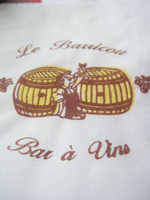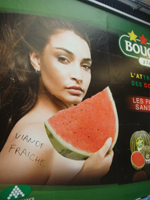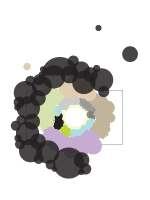
I made a blog site by WordPress. I have leaning to the way of standard coding again accordance with W3C(The World Wide Web Consortium).
For example, I never used h1,h2,h3 tags(They are codes in HTML). But W3C recommend to use h1-tag for the title or logo, and h2-tag for the slogan or catch phrase etc. I often use to the image substitute h1-3 tags. I think to h1-3 tags are important to Google crawl or another robot. They understand the content from h1-3 tags.
If we use negative margin to h1-3 tags, We can write down them at out side of the window ! and We can put graphical unique logo or title !
I think above all I need keep the way of web standard.
I ate “loup”. I asked “loup”(wolf in french) at restaurant thinking to be a wolf. But the sea bass is also called “loup”. I think “loup” is the wolf in the standard. Does someone eat wolf ???
ここ数日、Wordpress関連でいろいろなページを拝見してとても勉強になった。
改めて、W3C(The World Wide Web Consortium)が提唱するウェブ・スタンダードについて考える機会となった。少し自分のやり方も変えなくてはいけませんね。
例えば、これまで、HTMLに用意されているh1,h2,h3というタグなどは一切無視して使ってこなかった。(文字列をタグというモノで囲んで、どういう内容の文章かを記します) W3Cでは、タイトルやロゴなどはh1、スローガンやキャッチフレーズや目次はh2、その説明などはh3というふうに、段落にわけて整理して記述する事を薦めています。僕は、タイトルやロゴには画像を使うので、そんなもの使いません。とか考えていましたが、Googleなどの検索エンジンは、h1-3タグからサイト全体を認識するので、以外に大事なのです。
個性的でありながら標準的なデザインを両立するために、h1-3タグの記述をネガティブマージンを使って、画面の外側に記述する事で、ブラウザー上ではグラフィカルでかっくいいサイトですが、コード上には、事務的にサイトの内容を文字情報で記述できる方法を試しています。
まずは、業界標準であるのがとても大事なんですね。
今日は、カフェでloupというのを食べました。loupって仏語でオオカミの事。えええ、オオカミって食べれるの?と思って興味本位で注文しましたら、loupという名のスズキが出てきた。オオカミは食べないよね普通?




2 Comments
Add Yoursスズキさんだったのですか。
ルー ってかわいい音なので、狼とは結びつきにくいですね。
ウォトカさん
そう、鈴木さんだったんんです。 後から考えたら、何の疑いもなくオオカミを頼んでいた自分自身にかなりのクエスチョンでした。
よく考えたら、あまり美味しくないでしょうね。
間違って頼んだ割には、スズキは美味しくて満足でした。